Dyani Lao: Fil-Chi Tattooist Extraordinaire takes inspiration from Philippine folklore
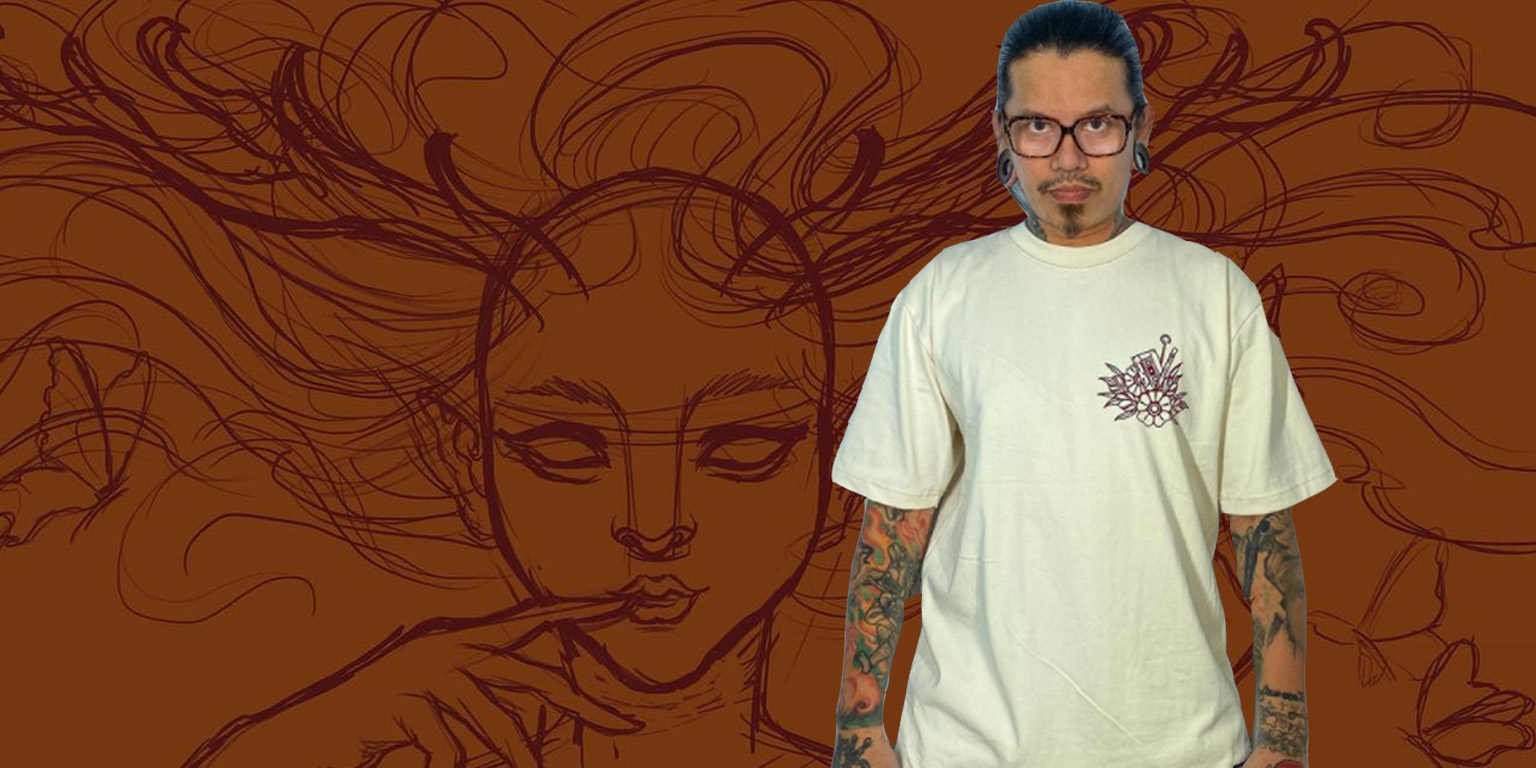
We’ve touched on how tattoos in Chinese history and even in modern China are frowned upon. Locally, it also seems to be the case. It’s quite rare to see Chinoys sporting skin art, much less being the tattoo artists, but one of the best and most well-known artists in the Philippines is part Chinese himself.
“Hi! I’m Dyani Lao. Married with 3 kids. A graduate of BFA in painting at the UPCFA in Diliman. Tattooing since 1992.”
It’s been almost three decades since he started inking skin, but what got Dyani on the road to tattooing? “[I had] been exposed at a young age to people with tattoos and I find it magical. These are kargador folks from a market near our house,” he shares. “Then in high school, I saw Bahala Na gang members tattooing themselves jailhouse style. That was the time I got curious and interested since I saw the process. Got into the punk scene, again exposed to people with more tattoos. It’s a long story. Lol!”
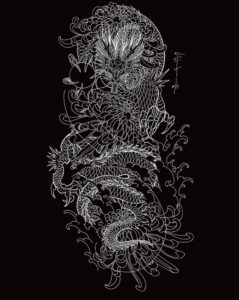
It’s a common practice nowadays for aspiring tattoo artists to find a mentor and work as an apprentice before going out on their own, but it was different when Dyani started. Tattoos weren’t a popular practice so there weren’t really that many people to choose from… if there were even any at all. “There were no apprenticeships offered during that time. Most of the tattooists were just also starting like me,” Dyani explains. “There were only [a] few who started earlier, from Olongapo, working on the Navy and Marines during the US bases occupation.”
Recently though, we’ve seen a rise in the popularity of tattoos in the Philippines. While still not totally accepted in some of the more traditional Fil-Chi communities, tattoos are not as frowned upon now as they once were. This phenomenon has affected local tattoo culture. “There are pros and cons, but I guess it’s better nowadays compared to when I started,” Dyani shares. “Supplies are easier to find, and the technology really helps in terms of convenience and portability of the tools. Learning is also faster through social media.” Hopefully, the accessibility doesn’t erase the significance of tattoos and tattoo culture. Dyani reminds us “[Tattoos] speak of the history of one’s identity in both physical and spiritual contexts.”
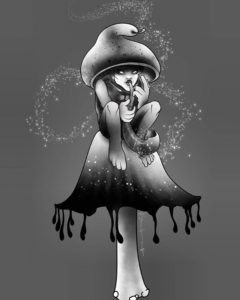
Speaking of one’s identity, Dyani has made a name for himself in the tattoo world because his art prominently features local mythological creatures. “I like fantasy art and myth. I’m also into Japanese art, folklore, and drawing monsters,” he enthuses. “When you say oriental tattoo design, people often think of it as Japanese tattoo. Why not Filipino?” he asks. “So here I am pushing my luck to have our stories and creatures as tattoos. This way, people who see them would have an interest in knowing the stories behind them and perhaps our culture can be recognized one day in the tattoo scene.”
But trying to popularize Filipino myths and legends aren’t the only things that have inspired his art. Dyani is a quarter Chinese, on his father’s side, and that’s influenced him, as well. “My dad was an artisan working for his uncle in Taiwan carving granite for Buddhist temples. He brought books every time he [came] home. Books of dragons and deities, flowers – everything Chinese art,” he shares. “Perhaps that’s one reason why I’m into myths and monsters.”
It’s important to remember that like everyone else who creates art, tattoo artists find inspiration not only in their interests and surroundings, but from fellow artists as well. Filip Leu, Guy Aitchison, Shige, Jeff Gogue are just a few of the artists that have helped get Dyani’s creative juices flowing, and he, in turn, inspires his daughters, who have taken an interest in art at young ages. Whether his daughters will follow in his footsteps and become prominent names in the tattoo world is yet to be determined, but he shares some advice for the new crop of aspiring tattoo artists out there. “Please do your research. Draw every day and make a folio. Respect your elders, get tattooed and get an apprenticeship from your favorite tattoo artist.”
Despite Dyani’s success in the tattoo world and the growing acceptance of inked skin, his appearance still causes a bit of a stir. His tattoos can cause a bit of a problem when he travels – “Especially in Immigrations [when I’m] trying to cross the border,” he notes, laughing. But still, he loves tattooing and tattoos. He can translate his artistry on any canvas, and is in fact, a very talented painter. So why not just pick the more traditional path? “Actually I was already tattooing before [I got] to college. I took painting to learn how to draw and mix colors better for tattooing. For me, it’s not just art per se, but a lifestyle. I even tattooed a live pig for my thesis.”
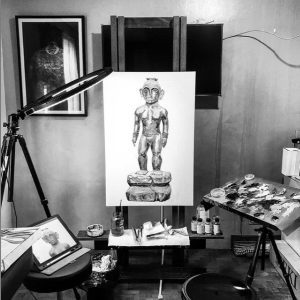
He’s got quite the client list, creating custom designs for most of them. Dyani makes sure they fall in love with his creations. “I require a wish list and photos for reference, then I base the composition on the body part to be tattooed,” he tells us. If you’re just itching for a tattoo, Dyani does have a few in stock, but how does he get the inspiration for those? “For my flash designs, again, it depends on my mood. Sometimes I write random words and draw what comes to mind.”
He makes sure that everything is just right. After all, it is going to be on your body forever. But a good client/artist relationship is important, especially when you’re in each other’s personal space, so how does he manage the more difficult clients? “I have an inquiry page on my website for them to read and answer. For them to reach the email stage and [then to] pay the deposit, they already understand what they are getting into. Or maybe that’s just me assuming. I could say I’m lucky enough that most of my clients know what they are doing and my inquiry page sort of filters out the difficult ones. https://dyanilao.com/inquiry/”
In the midst of the pandemic, Dyani’s put a few precautions in place, and he’s even become a bit of a super sleuth. “I stalk new clients with social media. If I’m not sure about the person, I turn them down,” he states. “I don’t allow groups, especially not in the same household, I require a med certificate, indoor slippers, and a mask worn at all times.” And as picky as Dyani is with his clients, he advises everyone looking to get their first tattoo to do their due diligence too – even when things get back to as normal as they can get. “Research. Know the artist, check their folio first before getting a tattoo. Make sure that you can handle your new self after getting tattooed.”
To say he’s professional is an understatement, as someone that has been a client of Dyani, he’s respectful and makes sure that you feel comfortable in his studio. It’s no shock when he told me that most of his clients have become close family friends since he often does larger pieces. “Longest [session I’ve done] is 16 hours. Never happened again. Largest [tattoo]: full back with both arms and one leg, still in progress.”
And with the variety of people and personalities he’s tattooed, there were sure to have been interesting pieces. When asked, Dyani did not disappoint. “A dragon head at the back of a bus driver’s head.” he recounts fondly. “He’s a local of Hong Kong. Did that when I was working for Tribal Tattoo HK around 2007 I think… He said he wants it there so his passengers could see it while he’s driving.”
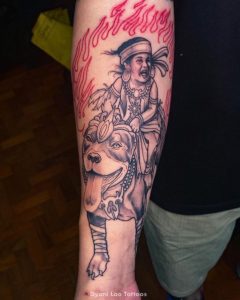
So, if you’ve been thinking about getting a tattoo for a while, this might be the sign to hit Dyani up for your first piece. And if you’re still a bit reluctant about what others might think? Dyani says “Just be yourself and be happy.”
